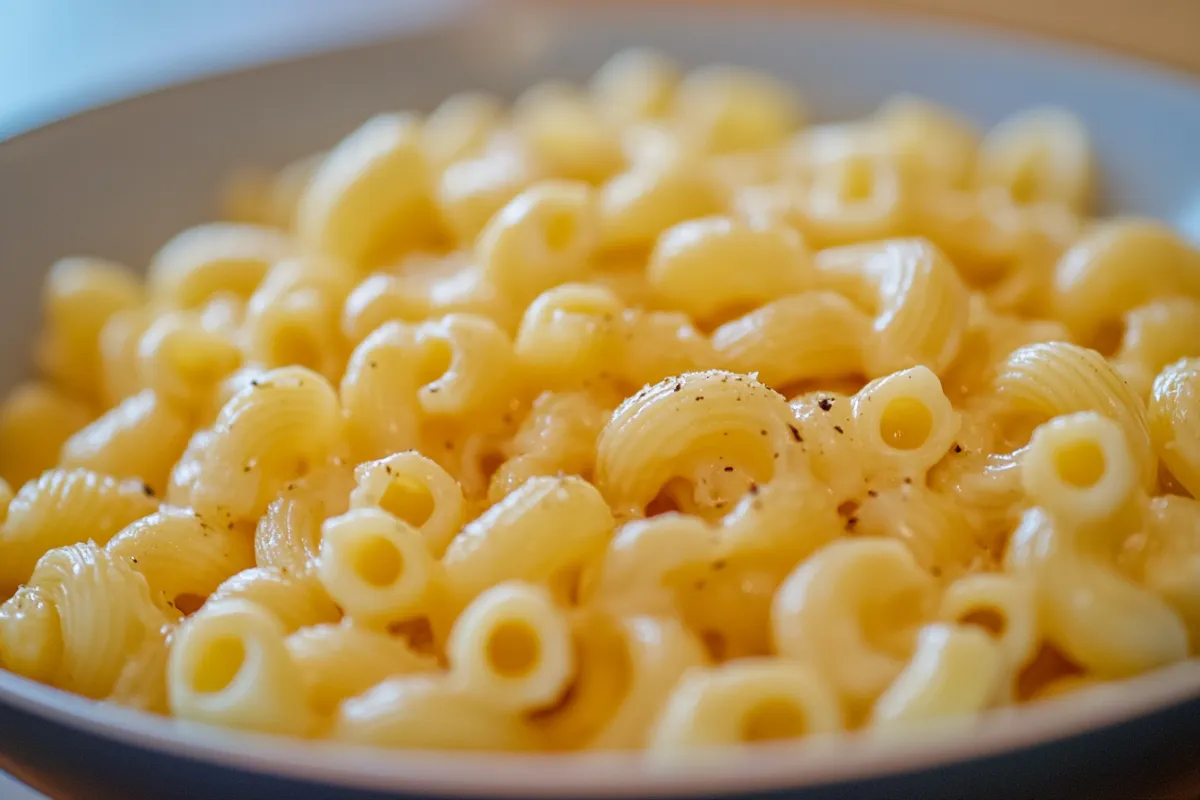What is the Closest Noodle to Cavatappi?
Pasta shapes are incredibly varied, with each bringing its own texture, sauce-holding capacity, and mouthfeel to the table. Among the many varieties of pasta, cavatappi stands out for its signature corkscrew shape, ridged surface, and versatility in dishes ranging from creamy bakes to refreshing pasta salads. But what if you can’t find cavatappi at your local store or simply want to explore alternatives? What pasta shapes come closest to cavatappi in terms of texture, appearance, and sauce absorption?
In this article, we’ll dive deep into the closest noodles to cavatappi, compare their characteristics, and discuss when and why you might choose a substitute. We’ll also explore specific recipes where these substitutions shine, nutrition comparisons, and answer common questions about the best ways to replace cavatappi in your dishes.
What is Cavatappi?
Before we explore alternatives, let’s first define cavatappi itself. Cavatappi is a corkscrew-shaped pasta, named after the Italian word for “corkscrew.” Its ridged surface and spiral form give it the ability to grip onto sauces better than smoother pasta shapes. Made from durum wheat semolina, cavatappi’s firm texture when cooked al dente makes it ideal for heavier sauces such as Alfredo, cheese-based sauces, or thick tomato-based dishes.
Cavatappi is also sometimes known as cellentani, a term used interchangeably in different regions. However, both names refer to the same pasta shape. This pasta is a favorite in baked dishes, where it retains its texture and structure under the weight of cheese or sauce, making it an essential choice for dishes like baked mac and cheese or creamy pasta bakes.
According to Cavatappi Pasta Recipes, Cooking Tips, and Uses, the corkscrew shape of cavatappi allows it to not only retain sauces but also hold up well in casseroles and baked dishes, making it a versatile addition to any kitchen. If you’re cooking a rich pasta dish with cream or tomato sauce, cavatappi is often the pasta of choice.
Why You May Need a Substitute for Cavatappi
Despite its versatility and popularity, there are a few reasons why you might need to find a substitute for cavatappi:
- Availability: In some regions, cavatappi may not be readily available, especially in smaller grocery stores that carry limited pasta shapes.
- Recipe Modifications: Certain recipes might benefit from a slightly different texture or shape, even if cavatappi is typically used.
- Dietary Needs: If you require a gluten-free version or prefer whole-grain pasta, finding a substitute for cavatappi becomes necessary.
For those interested in experimenting with different pasta shapes, the Ultimate Guide to Capellini Pasta can offer insights into how to adapt dishes with alternative noodles that maintain a similar mouthfeel and sauce-clinging ability.
Closest Pasta Shapes to Cavatappi
If you’re looking for the best substitute for cavatappi, these options come the closest in terms of shape, texture, and suitability for a variety of dishes:
1. Cellentani
- Shape and Structure: Cellentani is virtually identical to cavatappi and is often used interchangeably in recipes. The only real difference is the name, which varies by region.
- Best For: Creamy, cheese-based dishes such as baked mac and cheese or Alfredo pasta.
- How It Compares: With its identical corkscrew shape and ridged surface, cellentani is the closest match for cavatappi in terms of sauce retention and texture.
2. Fusilli
- Shape and Structure: Fusilli is a spiral-shaped pasta with tighter twists than cavatappi. While slightly different, its spirals still provide excellent sauce retention.
- Best For: Pesto-based dishes, pasta salads, and lighter tomato-based sauces.
- How It Compares: Fusilli is a bit more delicate than cavatappi, which makes it better suited for lighter dishes. However, its twisted shape still clings well to sauces, making it a suitable substitute for both creamy and oil-based sauces.
3. Gemelli
- Shape and Structure: Gemelli has a unique double-helix shape that resembles two strands twisted together. While it doesn’t have the full corkscrew twist of cavatappi, its shape works similarly to grip sauces.
- Best For: Light sauces, pasta salads, and creamy dishes.
- How It Compares: Gemelli has a smoother texture than cavatappi but provides enough surface area to work in similar types of dishes. Its twisted design also makes it a great choice for baked dishes where you need the pasta to hold onto a heavier sauce.
4. Trottole
- Shape and Structure: Trottole is a slightly larger, thicker pasta that has spirals and loops. It’s chunkier than cavatappi, but its spiraled design makes it a robust option for hearty sauces.
- Best For: Cream-based sauces, thick tomato sauces, and baked pasta dishes.
- How It Compares: Trottole’s size and thickness make it an ideal substitute for cavatappi when you need a pasta that will hold up under rich, creamy sauces. It’s especially effective in baked dishes where the pasta needs to stay firm.
5. Radiatori
- Shape and Structure: Radiatori has a compact shape with ridges that resemble a radiator, which allows it to trap sauces in its grooves.
- Best For: Hearty meat sauces, thick tomato sauces, and baked casseroles.
- How It Compares: Radiatori is a great substitute for cavatappi in dishes where the pasta needs to hold onto thick, chunky sauces. Its compact size makes it perfect for hearty meals, and its ridges are similar to cavatappi’s.
How to Choose the Best Substitute Based on the Dish
When selecting a replacement for cavatappi, it’s essential to consider the dish you’re preparing. Different pasta shapes excel in specific dishes based on their ability to hold sauce, their texture, and their size.
1. For Creamy Sauces
- Best Substitute: Cellentani or Trottole.
- Why: Both cellentani and trottole have large surface areas and ridges, making them perfect for clinging to thick, creamy sauces like Alfredo or cheese-based sauces. Their spiraled shapes also ensure that the sauce spreads evenly across the pasta.
2. For Tomato-Based Sauces
- Best Substitute: Radiatori or Fusilli.
- Why: Radiatori’s compact ridges hold thick tomato-based sauces exceptionally well. Fusilli, though slightly lighter, also performs well with marinara or Bolognese sauces due to its spiral shape.
3. For Pasta Salads
- Best Substitute: Gemelli or Fusilli.
- Why: These shapes are ideal for pasta salads because their twists and curves grip oil-based dressings, herbs, and other ingredients. They also maintain their structure well when chilled.
For a detailed look into how different pasta shapes work with various sauces, check out What is Consommé?, where sauce and broth interactions with ingredients are explored in depth.
Nutritional Comparison of Cavatappi and Its Substitutes
From a nutritional perspective, pasta made from durum wheat semolina has similar values across different shapes. However, there are slight variations depending on the size, thickness, and whether the pasta is enriched, whole grain, or gluten-free. Here’s how cavatappi and its substitutes compare:
Calories (Per 100g Cooked):
- Cavatappi: 150-200 kcal
- Fusilli: 150-200 kcal
- Cellentani: 150-200 kcal
- Gemelli: 150-200 kcal
Protein (Per 100g Cooked):
- Cavatappi: 5-7g
- Fusilli: 5-7g
- Cellentani: 5-7g
- Gemelli: 5-7g
Fiber (Per 100g Cooked):
- Cavatappi: 1-2g
- Fusilli: 1-2g
- Cellentani: 1-2g
- Gemelli: 1-2g
For those with specific dietary needs, gluten-free versions of these pasta shapes are also available, typically made from rice, quinoa, or corn flour. These alternatives offer similar textures but with the benefit of being gluten-free, making them suitable for those with celiac disease or gluten sensitivities. Additionally, whole-grain versions of these pastas provide higher fiber content, making them a healthier option for those seeking to increase their fiber intake.
For an in-depth discussion on making healthier pasta choices, explore Benefits of Eating Chocolate, which touches on how to make healthier swaps in your diet without sacrificing flavor.
Frequently Asked Questions (FAQs)
1. What is the closest pasta to cavatappi?
- Cellentani is the closest pasta shape to cavatappi. It has the same corkscrew shape, ridged surface, and works well in all the same dishes.
2. Can I use fusilli instead of cavatappi?
- Yes, fusilli can be used as a substitute for cavatappi, especially in lighter dishes like pasta salads or tomato-based sauces. It also holds onto sauces well due to its spiral shape, although it’s slightly less hearty than cavatappi.
3. Which pasta holds sauce better: cavatappi or gemelli?
- Cavatappi generally holds sauce better due to its ridges and corkscrew shape, which provide more surface area for the sauce to cling to. Gemelli is still a good option, though, especially for oil-based or creamy sauces.
4. Are there gluten-free options for cavatappi substitutes?
- Yes, there are many gluten-free versions of pasta available, including fusilli and cellentani. These gluten-free alternatives are often made from rice, corn, or quinoa and offer similar textures to traditional wheat-based pasta.
5. What can I use in place of cavatappi for baked dishes?
- For baked dishes, trottole or radiatori make excellent substitutes. Both have larger, more robust shapes that stand up well to the heat of baking and the weight of heavy sauces.
Conclusion
Cavatappi is a versatile pasta known for its ability to hold onto sauces, making it a popular choice for many dishes. However, when you’re out of cavatappi or looking for alternatives, several pasta shapes can work just as well. Whether you choose cellentani, fusilli, gemelli, or radiatori, each of these shapes brings its own unique characteristics to the table.
To discover more about pasta pairings and the best ways to cook with different pasta types, visit Cavatappi vs Macaroni for further comparisons of popular pasta shapes.

